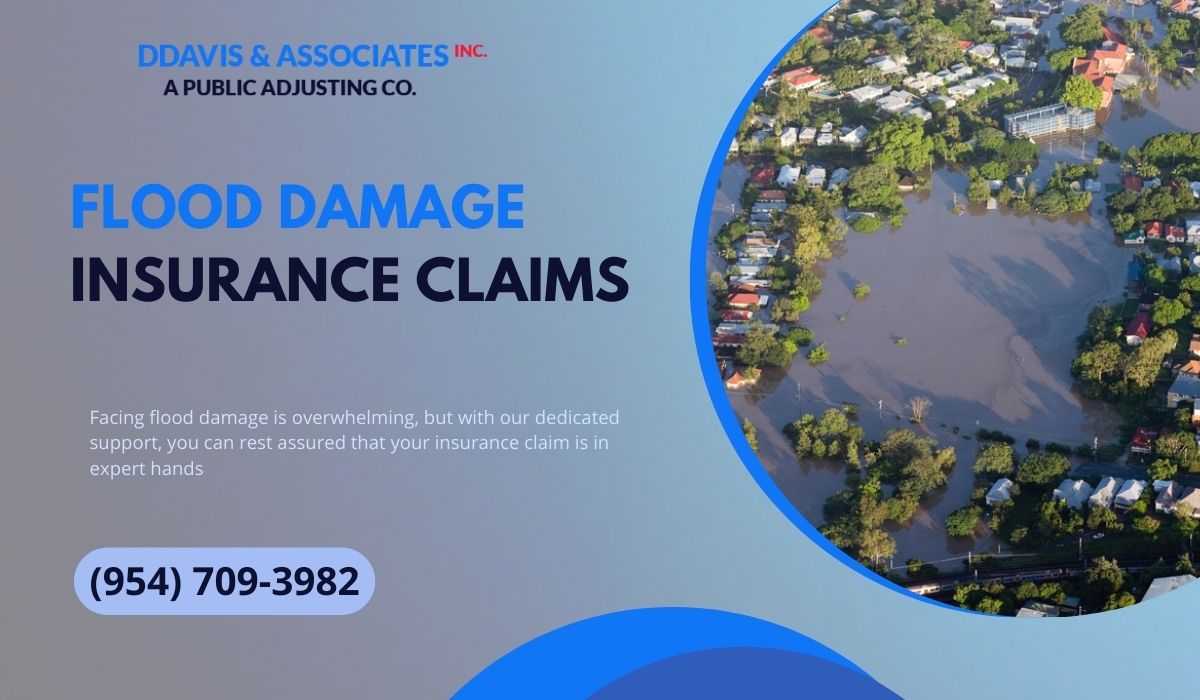Living in Florida means dealing with the risk of flooding from hurricanes, tropical storms, and other severe weather events. With its low-lying coastal areas and propensity for heavy rainfall, Florida is highly vulnerable to flooding. That’s why having flood insurance is crucial for homeowners in the Sunshine State. However, understanding how the claims process works can be confusing. In this post, we’ll break down everything you need to know about filing a flood damage insurance claim in Florida.
Understanding Flood Insurance Policies
Before we dive into the claims process, it’s essential to understand the basics of flood insurance policies. In most cases, homeowners insurance policies do not cover flood damage. Instead, you need to purchase a separate flood insurance policy through the National Flood Insurance Program (NFIP) or a private insurer.
The NFIP is a federal program managed by the Federal Emergency Management Agency (FEMA), which provides affordable flood insurance to homeowners, renters, and business owners. Private flood insurance policies are also available from some insurance companies and may offer higher coverage limits or additional coverage options.
Filing a Flood Damage Claim
If your property sustains flood damage, the first step is to contact your insurance provider as soon as possible to initiate the claims process. Most insurers have a dedicated claims hotline or online portal for submitting claims. Be prepared to provide your policy information, contact details, and a brief description of the damage.
After reporting the claim, an adjuster will be assigned to your case. The adjuster’s role is to inspect the damage, review your policy coverage, and determine the amount of compensation you are entitled to receive.
Documenting the Damage
Before the adjuster arrives, it’s crucial to document the extent of the flood damage thoroughly. Take plenty of photos and videos of the affected areas, including any structural damage, water lines, damaged belongings, and standing water. This documentation will serve as evidence to support your claim.
If possible, try to separate damaged items from undamaged ones and create an inventory list detailing the items that need to be replaced or repaired. Keep receipts for any temporary repairs or expenses you incur while waiting for the claim to be processed.
Cooperating with the Adjuster
When the adjuster arrives, they will inspect the property and assess the damage. Be prepared to answer questions about when the flooding occurred, the depth of the water, and any actions you took to mitigate further damage.
It’s essential to cooperate fully with the adjuster and provide any requested documentation or information. If you have concerns or disagree with the adjuster’s assessment, express them respectfully and provide supporting evidence if possible.
Understanding Your Coverage Limits
Flood insurance policies typically have coverage limits for building property (the physical structure) and personal property (your belongings). It’s essential to review your policy documents and understand the extent of your coverage and any deductibles or exclusions that may apply.
If the estimated cost of repairs or replacements exceeds your coverage limits, you may need to pay out-of-pocket for the remaining expenses. In some cases, you may be eligible for additional assistance from FEMA or other disaster relief programs.
Settling the Claim
Once the adjuster has completed their assessment, they will provide a settlement offer based on the covered damages and your policy limits. Review the offer carefully and ensure you understand how the settlement amount was calculated.
If you accept the settlement offer, the insurance company will issue a payment, typically in the form of a check or direct deposit. If you disagree with the offered amount, you can negotiate with the insurance company or file an appeal.
Rebuilding and Repairing
After receiving the settlement, you can begin the process of repairing or rebuilding your property. It’s important to keep detailed records of all expenses related to the repairs, as you may need to provide documentation to the insurance company.
If you need to relocate temporarily while repairs are being made, check if your policy covers additional living expenses (ALE), which can help cover the costs of temporary housing, meals, and other necessary expenses.
Mitigating Future Flood Damage
Once the repairs are complete, consider taking steps to mitigate future flood damage. This may include elevating your home, installing flood vents, or implementing other flood-proofing measures. Some of these mitigation efforts may be eligible for discounts on your flood insurance premiums or grants from FEMA or state programs.
Staying Prepared
Living in a flood-prone area like Florida means being prepared for the possibility of flooding. Review your flood insurance policy annually and ensure you have adequate coverage for your property and belongings.
Additionally, create an emergency plan and assemble a disaster supply kit with essential items like non-perishable food, water, first aid supplies, and important documents. Being proactive can help minimize the impact of a flood event and streamline the claims process.
In conclusion, navigating the flood damage insurance claims process in Florida can be complex, but understanding the steps involved can help ensure a smoother experience. By documenting the damage, cooperating with the adjuster, and being familiar with your policy coverage, you can increase the likelihood of a fair settlement and a timely recovery from flood-related damages.
If you have any further questions or need assistance with your flood damage insurance claim in Florida, don’t hesitate to contact us at (954) 709-3982. Our experienced team is here to guide you through the process and ensure you receive the support you need.






